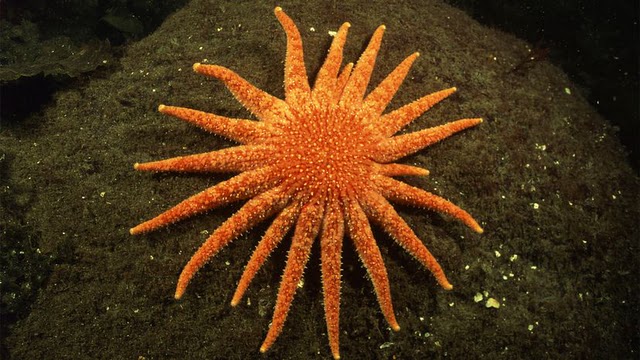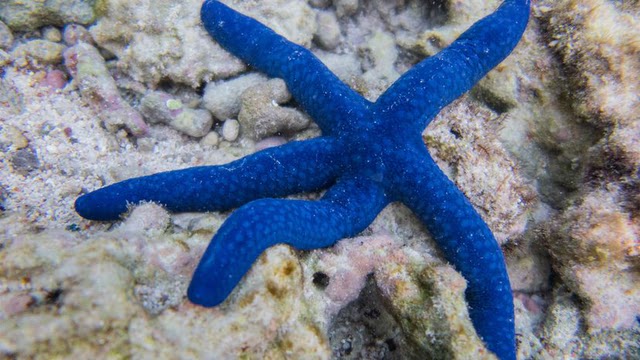Quck answer
Starfish, also known as sea stars, are fascinating creatures with unique characteristics. Here are 11 interesting facts about starfish:
1. Starfish don’t have a brain or blood.
2. Some species of starfish can regenerate their arms.
3. Starfish can turn their stomachs inside out to eat their prey.
4. They have tiny tube feet that help them move and cling to surfaces.
5. A starfish’s mouth is located on the underside of its body.
6. Some species have up to 40 arms, while others have only five.
7. Starfish come in a variety of colors, including red, orange, and blue.
8. They can live for up to 35 years in the wild.
9. Starfish are not fish, but are in the same family as sea urchins and sand dollars.
10. Starfish are important predators in marine ecosystems.
11. Some species of starfish are considered delicacies in some cultures.
Wild Animals

Did you know that starfish are not actually fish? Marine scientists now refer to them as “sea stars” because they are invertebrates and do not have a backbone. Instead, their bodies consist of a central disc with arms that radiate out, and hundreds to thousands of small suction cups called “tube feet” on the underside. Here are 11 more interesting facts about these beautiful marine animals found in a variety of colors, shapes and sizes.
1. They Have a Long History
Sea stars belong to a group of marine invertebrates called echinoderms, which first appeared more than 500 million years ago during the Ordovician Period. The ancestors of modern-day sea stars appeared over 450 million years ago. Echinoderms include sea stars, sea urchins, sea cucumbers, brittle and basket stars, and sea lilies and feather stars.
2. There Are Many Different Species
There are around 2,000 different species of sea stars that can be found in a variety of habitats from shallow sandy bottoms and cold rocky environments to the bottom of the sea floor. Some kinds of starfish are even found on sandy sea beds 29,500 feet (9,000 meters) deep! They come in a variety of colors, shapes, and sizes. One of the most unique sea stars is the crown-of-thorns sea star, a tropical species found in the Pacific and Indo-Pacific with long spines that cover its body. A sea star’s spines are used for protection from predators such as birds, fish, and sea otters.

A crown-of-thorns sea star (Acanthaster planci) in Thailand’s Andaman Sea.
Gerard Soury/Getty Images
3. They Have a Unique Feeding Mechanism
A sea star’s mouth is on its underside, and it captures food (typically a bivalve such as a clam or mussel) with its tube feet. The sea star then wraps its arms around the animal’s shell and pulls it open slightly. It pushes its stomach through its own mouth and into the prey’s shell, digesting the animal and then sliding its stomach back into its own body. This unique feeding mechanism allows the sea star to eat larger prey than it would otherwise be able to fit into its tiny mouth. Among the other sea star menu favorites are mollusks like clams, oysters, and snails.
4. Some Species Can Have Up to 40 Arms
Despite having five-point radial symmetry, not all starfish have five arms. According to Stone, some species can have 10, 20, or even 40 arms. If a sea star loses one of these arms, it has the remarkable ability to regenerate it. This is possible because most of the vital organs of the sea star are housed in their arms, allowing some species to grow an entirely new sea star from just one arm and a portion of its central disc.
This ability to regenerate lost arms is particularly useful when a sea star is attacked by a predator. It can lose an arm, escape, and then grow a new one later. However, this process takes about a year. Some species require the central body to be intact to regenerate, but a few can grow an entirely new sea star just from a portion of a severed limb.
5. Starfish Have Eyes
Contrary to popular belief, sea stars do have eyes. They are located at the end of each arm in the form of an eye spot. This means that a five-armed sea star has five eyes, while a 40-armed sun star has 40 eyes. Although these eyes are relatively simple and can only sense light and dark, they are sufficient for the environments in which sea stars live.
6. Some Starfish Can Live for Over 30 Years
Starfish have an impressive average life span of 35 years, with larger species typically living longer than smaller ones.
7. Removing Starfish from Water Can Harm Them
Like many aquatic animals, sea stars obtain oxygen from the water. They have a unique circulatory system that pumps water through their bodies instead of blood, and prolonged removal from water can cause stress and harm. Unlike fish that have gills or mammals that have lungs, sea stars absorb oxygen from the water through various parts of their bodies, including their skin and tube feet.

A blue sea star (Linckia laevigata) perched on coral at Lady Elliot Island in Australia’s Southern Great Barrier Reef.
8. Starfish Can Reproduce Sexually or Asexually
“Sea stars can reproduce sexually through spawning or asexually by dividing their central disc,” explains Stone. Male and female sea stars are difficult to distinguish because they look identical. They reproduce sexually by releasing sperm and eggs into the water. The sperm fertilizes the eggs, producing swimming larvae that eventually settle on the ocean floor and grow into adult sea stars. Sea stars can also reproduce asexually through regeneration, which occurs when they lose an arm.
9. Starfish are Omnivores
Starfish have a varied diet, consuming both plant and animal life. According to Stone, what they eat depends on the species. Many species are scavengers or carnivores, feeding on gastropods, bivalves, barnacles, marine worms, and other invertebrates. Some species are suspension feeders, capturing plankton and organic material from the water.
10. Sea Stars’ Unique Movement
Sea stars have hundreds of tiny suction cups called tube feet on the underside of their bodies, which they use to move around. They bring in seawater through the madreporite on their top side to fill their tube feet. According to the National Ocean Service, adult sunflower sea stars can move at an impressive speed of 3 feet (around 1 meter) per minute using 15,000 tube feet. Tube feet also help sea stars catch their prey. If you have the chance, observe a sea star moving in a tide pool or aquarium — it is a truly amazing sight.
11. Starfish & Humans: A Risky Interaction
Because of their star shape, humans often take starfish as souvenirs or even hold them out of the water for photos. However, this can be dangerous for the starfish. Starfish, like sea cucumbers and corals, have fragile arms and body structures. Even the slightest poke can hurt or damage them, especially when people carelessly throw them back into the water. Additionally, human hands are naturally harmful to sea creatures due to the billions of bacteria they contain, and contact with them can cause slow death for these creatures.
It is important to note that sea stars are not harmful to humans.
Sad News
The International Union for Conservation of Nature does not currently consider any species of sea star as endangered. However, since 2013, at least 21 species of sea stars along the North American Pacific coast have been dying off due to sea star wasting syndrome. This disease causes sea stars to lose their limbs and eventually disintegrate, leaving behind a pile of white goo.
FAQ
1. What is a starfish?
A starfish, also known as a sea star, is a type of echinoderm that lives in the ocean. There are over 2,000 species of starfish, and they come in a variety of colors and sizes. Starfish have a unique shape, with five or more arms that radiate out from a central disc-shaped body.
2. How do starfish eat?
Starfish have a unique way of eating. They have a mouth located on the underside of their body, and they use their arms to pry open the shells of their prey. Once they have opened the shell, they push their stomach outside of their body and into the shell. They then digest their food outside of their body before pulling their stomach back inside.
3. Can starfish regenerate their arms?
Yes, starfish have the ability to regenerate their arms if they are damaged or lost. In fact, some species of starfish can regenerate an entire new body from just one arm and a portion of the central disc.
4. How many arms can a starfish have?
While most starfish have five arms, some species can have up to 40! The number of arms on a starfish depends on the species, and some species can even regenerate arms if they are lost.
5. Do starfish have eyes?
Yes, starfish have eyes at the end of each arm. While their eyes are not very advanced, they can detect light and dark and some can even detect movement.
6. Can starfish live out of water?
Most species of starfish need to live in water in order to survive. However, some species can survive for short periods of time out of water, as long as they are kept moist.
7. Are starfish endangered?
While some species of starfish are threatened or endangered due to habitat loss and overfishing, many species are still abundant in the ocean. It is important to protect the habitats of these unique creatures to ensure their survival for future generations.





Leave a Reply